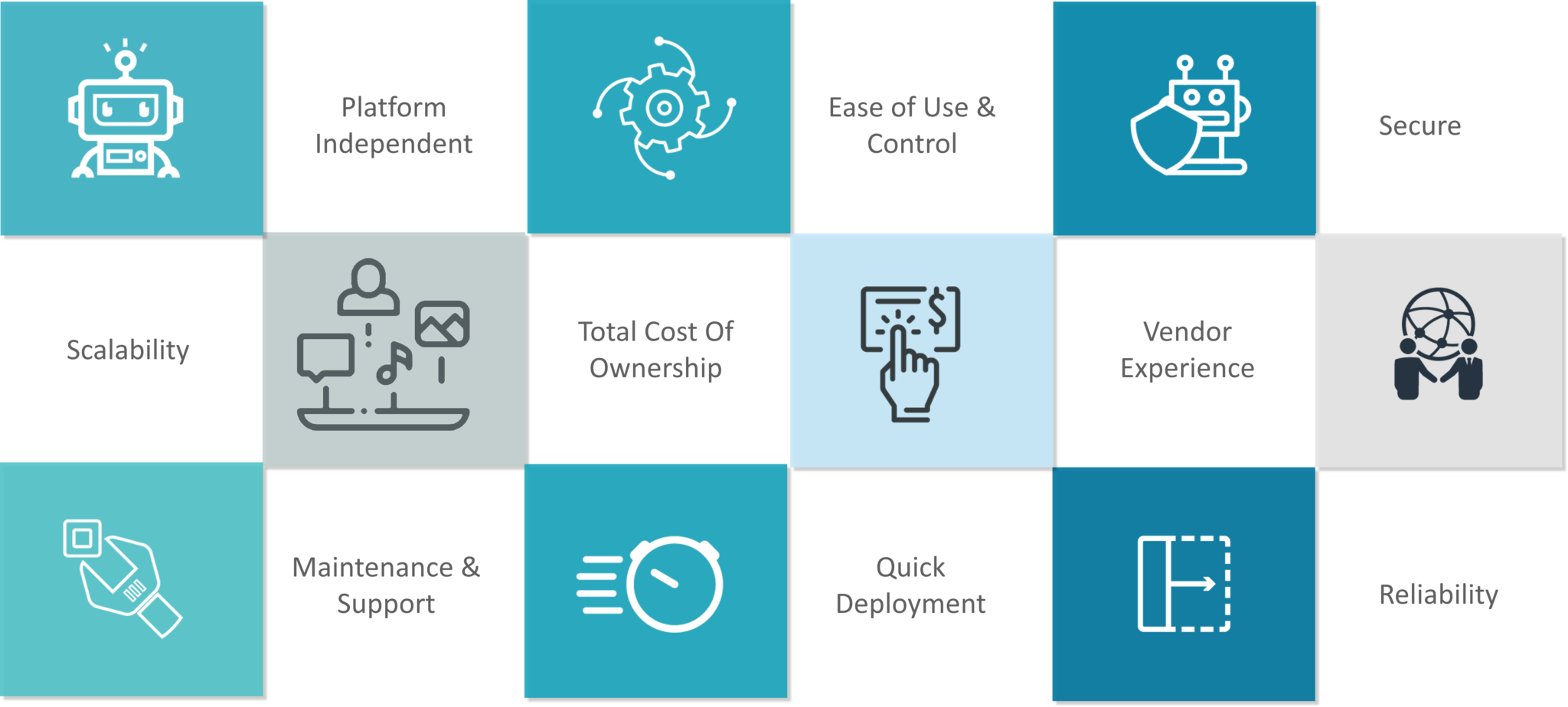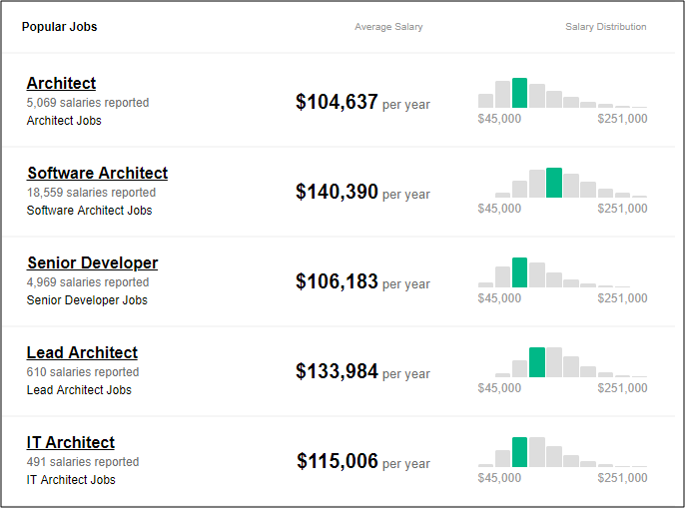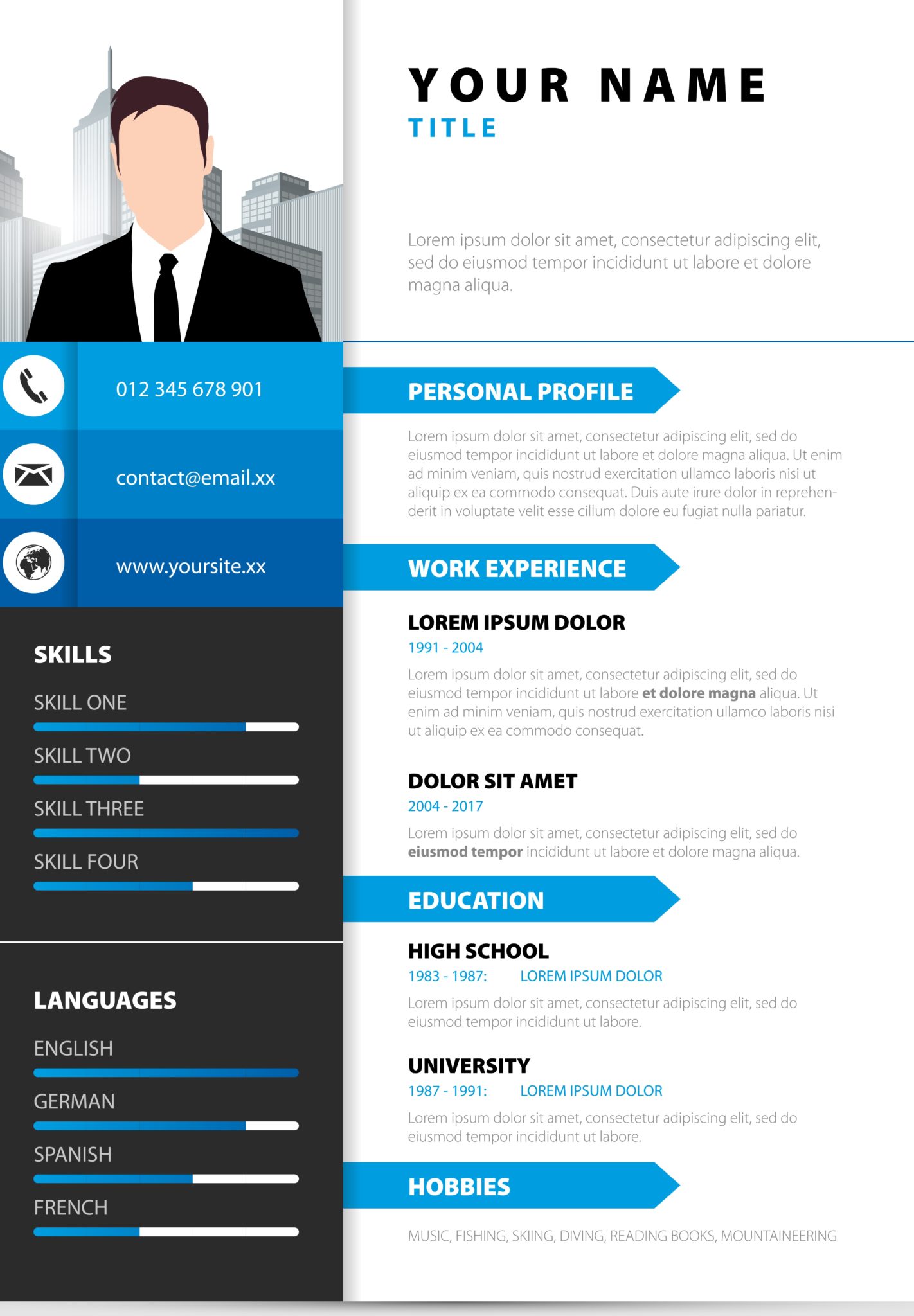UiPath RPA Training Course
- 35k Enrolled Learners
- Weekend/Weekday
- Live Class
Will RPA replace humans? Is Robotic Process Automation the future? Will RPA kill outsourcing?
Everyone has been talking about what is RPA Automation, and how automation will change the world! But, have you ever thought about what could be the probable answer to your questions such as above. Well, this blog on Robotic Process Automation will debunk all the myths around RPA and will give you a deep dive understanding of this technology.
So. let me first introduce to all the key areas for this blog:
According to the prediction of Mckinsey & Company, Robotic Process Automation(RPA), will showcase an economic impact of $6.7 trillion by 2025. With such a rise in this technology, for the last few years, it pounders us to think about: Where did RPA come from?, What is the origin of RPA? What made this technology take the market by storm? Is RPA the successor of similar automation tech?
As the above saying quotes, the automation used in a business should magnify the efficiency of business operations. It is a known fact that Business & Operations have been there though ages, and so has automation. Traditional automation has been used in almost all kinds of operations, but, no one actually knows how RPA plays the role with the other technologies.
Almost all of us google on What is the history behind RPA? How did RPA emerge? How does RPA magnify our business?
So, here is your one-stop solution to get an idea of the history of RPA, let us start tracing its history and get into the origins of this technology.
There were mainly 3 technologies, or you can predecessors before RPA came into the picture.

Screen Scraping Technology was the start of Automation. This technology emerged in the beginning days of the Internet, helping to extract data from the web. While there were benefits of screen scraping, yet it was completely dependent on the software’s compatibility with the systems present in that generation. This limitation resulted in the loss of business since it was quite tough for a mediocre level business user to understand the software dependencies. 
Now, the organizations needed a software which was more adaptable!
This resulted in the existence of our next tech, which is the Automation & Management tools.
This tech emerged in the early 1920s, but only gained popularity in the early 1990s during the emergence of manufacturing. As the name suggests, this software provided assistance in capturing customer information, processing invoices, getting the list of items ordered and so on. With workflow automation & management tools, the manual workforce was reduced to perform data entry.
Well, this technology definitely increased speed, efficiency, and accuracy, but yet it could not be used in all kinds of software for large-scale automation.
Then came into existence Artificial Intelligence. Though it was coined in 1956, at Dartmouth College, it emerged as one of the leaders in the market in the late 1990s.
Artificial Intelligence is understood as the capability of computer systems to perform tasks that normally require human intervention and intelligence. So, those kinds of tasks which can be performed based on the previous judgments of humans were taken over by the Artificial Intelligence machines. The world has been benefited with AI by enhancing the accuracy and precision in tasks, and by reducing the manual workforce.
Each of the above technologies has their own part to play in the emergence of RPA. But, what makes RPA a prominent technology, is its ability to amalgamate various aspects of the above technologies, according to the user need.
With the note, of this, let us look into the Emergence of Robotic Process Automation.
With the mixture of artificial intelligence, screen scraping, and workflow automation, Robotic Process Automation came into emergence in early 2000. This technology uplifted the capabilities of each of the three technologies, by making an impact in the market.
Since RPA came into existence because of its predecessors, it was highly dependent on both screen scraping and workflow automation. It provided drag and drop functionalities and uses optical character recognition (OCR) technology to capture data from changing websites.
Now, if you are wondering how RPA and AI are related, then let me tell you that, RPA lets you configure the robot to collect the data, recognize patterns and then be adaptable as per the requirement. The collaboration between RPA and AI, lets you perform a complex decision – making.
Before I tell you the difference between these two terms, let me define them for you.
Automation: This term refers to the invention of new technology to solve an existing manual problem. But, yes, it definitely needs human intervention.
RPA: The RPA software uses existing technology’s interface to automate the human element in the process. So, basically, there is no need for human intervention.
You can refer to the following table, to get a few differences RPA and Automation based on some parameters.
So, in layman terms what differentiates automation from RPA is the ability of RPA to adapt to various situations. Once it is being trained to capture and interpret the actions of processes in existing applications, it can further perform actions such as manipulation, triggering responses, and also simultaneously communicate with various other systems.

As you can see in the above image, the trend for RPA in the market is increasing day to day. With such a rise in the market, it has proven itself to be the hot cake in the market, by providing a potential to increase productivity for enterprises.
RPA is said to contribute to the market growth of Big Data & Internet of Things. Software robots will be able to generate a humongous amount of data on business operations, as they record and monitor the steps to execute workflows. Not only this, but RPA also has the capability to analyze Big Data and reveal the business insights.
Apart from these, RPA is also believed to collaborate with other software to enhance customer experience. Technologies such as Artificial Intelligence, Cyber Security, Cloud Computing, Virtual Reality are believed to the collaborate with RPA for automation.
Looking at these trends in the market obviously makes believe that RPA is the new generation technology involved in each and every business. Whether a small enterprise or a large organization, the need for Automation will never be replaced by anything.
So, before I tell you what RPA is, let me first tell you What RPA is Not?
Robotic Process Automation has been in the market for a while now, but yet, everyone thinks this technology has suddenly emerged in the market. You can consider the following examples to understand the difference between RPA and other processes.
Example 1: If you are using a chatbot as a help for customers to fill a form automatically, then it is a Chat-Bot which has ML algorithms included with AI. Though, you can always use RPA tools to achieve this.
Example 2: If you want to span around web pages and extract data, then you use RPA with the help of any of its vendors.
Example 3: If you want to scan the invoices and store the data somewhere, then you can use RPA. But, if you want to scan voices and store the said words to a text file, then you need AI.
Now, coming to the most popular myths of RPA. You can consider the following list to know them and learn the truths about it.
1. Robots will replace humans.
All of you must be thinking that will RPA replace humans someday or the other?
But, let me tell you that RPA is not entirely independent as of now. There are various instances where humans are needed for high-level thinking. At the same time, RPA allows employees to increase their efficiency and productivity.
The manual workforce will be definitely reduced, but it will never replace the complete manual workforce.
Find out our Automation Testing Training in Top Cities/Countries
| India | Other Cities/Countries |
| Bangalore | UK |
| Hyderabad | USA |
| Pune | Canada |
| Chennai | Singapore |
2. RPA software robots are 100% accurate.
As all of us know that robots have no common sense. They will do as you make them do. So, if there is a flaw in the robot’s framework, then it will allow an obvious error to crawl into the instructions provided to the robots. They will replicate mistakes that are present in a workflow unless someone stops it.
Just to avoid this kind of blunders, we should ensure that the processes are optimized and the bots should be monitored at initial stages of automation.
3. RPA will not work in small industries.
A common misconception is that RPA is used only by large scaling productive industries. However, RPA can be applied to almost any repetitive, rules-based, and high-volume business activity in any type of industry.
Now, that you know the history behind RPA and What RPA is not? Let me now tell you what is RPA?
The Process of automating the workflows with help of robots/software to reduce the involvement of humans is said to be Robotic Process Automation.
Over here there are mainly three terms that you need to understand: Robotic, Process and Automation. Let me explain you each of these terms one by one.
If we summarize all the terms together then, mimicking human actions to perform a sequence of steps that lead to a meaningful activity, without any human intervention is known as RPA Automation.
You can go through the following video to get a better understanding on RPA Automation with a hands-on.
This tutorial on “What is Robotic Process Automation (RPA)” will give you an introduction to RPA. You will also learn about the leading RPA tools such as UiPath, BluePrism and Automation Anywhere. Towards the end, there is a demo on RPA using UiPath.
Stay Ahead in Tech: Sign Up for Our QA Automation Courses!
Now, if you what RPA is then the next thing that should come on your mind should be What are the Factors to look in RPA software?
Now, that you know the factors to look in RPA, let me tell you How you can get started with RPA?
As you can see in the below image, to get started with RPA, you need to follow the below steps. 
Alright!! So, now let me answer a few questions that people generally ask for.
So let us get started with each of this one by one.
RPA Automation helps enterprises to automate tasks by providing the following benefits. Refer to the below image.
Most of the companies are now using RPA for testing. They are scraping their old testing tools, such as Selenium, which was/is used for web testing. But RPA provides much more than testing.
The industries in which RPA can be used are:
Looking at the above industries, let me show you, folks, few use-cases where Robotic Process Automation can be applied.
Have you heard of the saying “Mind The Gaps, else you may fall into a hazard“?
Well, this saying clearly indicates that we may find gaps in automated processes such as copy-and-paste, data-gathering and consolidation and data entry from one application to another.
Below are few gaps which have the highest-value opportunities to automate with robotics.
Data extraction: All enterprises need to record their transactions in journals so that they can be used for future processes. Over her instead of the manual workforce and having a question always in mind whether the transaction is stored correctly or not, a robot can be used to gather and consolidate transactions.
Data management: Aggregating humongous amount of data for the manual workforce would be a tedious task. So, a robot can do this job for employees, so that employees can utilize their brains in something more important.
Maintaining customer data: In an enterprise, many customers may get connected to the business on a daily basis. Now, every company needs to maintain the data of each and every customer. If a person does it, then it may take longer than a robot. But, if a robot does this task, then data can be periodically validated and updated.
Performing Financial Close & Reporting: The tedious process of posting data from various sources to sub-ledgers of a company to create and deliver financial filings can be easily handled through RPA.
Invoice Processing: Almost all the companies have invoices which need to be processed. So, if a customer asks for an invoice, the company should be able to process it. Doing it manually for 100’s of customers is a time taking the task. Instead of it, if a robot is made to do, the productivity rate would be much higher.

Getting reports about Market: Organizations may need to get the report of the market situation on some parameters on daily basis, to compete with their competitors. A robot can be put into this job, to deliver a full report of the market on time.
Supplier Pricing Comparisons: While you prepare a customer quote, you need to compare suppliers’ prices, 

Delivery reconciliation: When we order something online, the orders need to be validated against shipments. Well, we can make a robot do that for us, instead of we do it manually. So, a robot will check and approve all matching orders and notify us whenever there is an exception.
Now, as you have reached to this section of the blog, let me tell you that when I say that a robot will make your work easy. It is not a physical robot, but it is any RPA tool in which you can make an automation workflow and perform tasks.
In the next section of the blog, I will clarify all your doubts on What are the criteria considered while choosing an RPA Tool? Which RPA Tool to choose? And What are the top RPA tools?
RPA Tools/Vendors are the tools available in the market which help you to perform automation workflows.
Now, any RPA tool that you choose must perform the following three functionalities:
The following are a few parameters that you need to consider while selecting an RPA tool.

Now, that you know the various parameters that you need to consider while choosing RPA Tools, let me show you the list of top RPA tools.
As you can see in the above table, each tool has its own benefits and losses. But, if you see the market trend, then the market leaders are the trio(Blue Prism, UiPath & Automation Anywhere)
Let us compare these top tools one by one.
| Features | UiPath | Blue Prism | Automation Anywhere |
| Is trial version available? | Community Edition is available | No trial version is available | The trial version is available for 30 days |
| Is it user-friendly? | Has a user-friendly visual designer | Has a user-friendly visual designer, easier than Automation Anywhere | Developers friendly but requires high programming skills |
| Google Trends Popularity | Most Popular Tool | More popular than Automation Anywhere | The least popular tool in the trio |
If you look at the features mentioned in the above table. It is clear that UiPath wins between the trio as if offers a trial version and has a user-friendly visual designer. So, if you are new to RPA, and you want to learn how to automate tasks, then you can choose UiPath to practice well. Once you practice well, you can choose the Enterprise edition to automate large tasks at a business level.
If you wish to learn more about UiPath, then you can click here.
Now, that you know so much about RPA, let me quickly make you go through the job roles in RPA.
Once you gain expertise in Robotic Process Automation, you can become an RPA Developer. So, let me quickly discuss the roles and responsibilities of this role.

An RPA Developer mainly has 3 roles:
Process Designer: Roles & Responsibilities
The person with this job role is responsible for understanding the process which needs to be automated. He/she needs to make sure that the people working as a team on an RPA project are in sync, and monitor the changes that happen after implementing the feedback during development or testing phase.
Automation Architect: Roles & Responsibilities
The person holding the position of Automation Architect builds the RPA project using the RPA tooling.He/she is the member of the core automation team and may or may not have the developer level expertise depending on the RPA tool the organization is using.
Production Manager: Roles & Responsibilities
Once a project or an automation workflow is ready, it is tested and rolled into the production. Now, at this stage comes the role of production manager. The production manager is responsible for the following tasks:
All of these three roles play their own part, in the RPA industry. Well, if you are new to the RPA world and want to become an RPA Developer. Then your first step in climbing the ladder is to gain an extensive hands-on expertise in RPA tools and become a Process Designer. Once you have an industry-level based experience in automating tasks, you can jump to the next step of your career to become an Automation Architect and a Production Manager.
So, now let me just quickly cover the salaries for each of these roles and give you an example of sample RPA Developer resume.
Also, according to the Indeed.com, salary estimated from 41,166 employees, users, and past and present job advertisements in the past 36 months range from around $104,637 per year for Architect to $140,390 per year for an RPA Developer Architect. You can refer to the below image, to know the Architect Jobs offered by various companies in the USA.

Now, that you know the average salary for an RPA, it will only be fair if I show you an RPA Developer job description before I explain how an RPA Developer resume looks like.

You can refer to the following video to enhance your knowledge about an RPA Developer.
This Edureka video on “RPA Developer Roles and Responsibilities” will help you to know the various Roles and Responsibilities of RPA Developer.
Now, let me show you a sample RPA Developer resume, which you can alter based on your experience and the job requirement.
 Summary:
Summary:
RPA Developer with n+ years of hands-on experience in automating processes using the banking RPA technology to drive process improvements for the Customer Experience and Analytics team.
Education:
Mention your qualifications(Masters Degree, Bachelors Degree, 10th and 12th)
Experience:
Skills:
So, folks, that’s an to this blog on Robotic Process Automation. I hope you enjoyed reading this blog and got a deep understanding of RPA. To upskill your career in RPA, getting a Automation Anywhere Certification training is a must, as this can help you land as an RPA developer. If you wish to further learn about RPA Automation, then you can check out our RPA Course. This course will let you enhance your knowledge on RPA and will give you extensive hands-on experience in UiPath.
Got a question for us? Please mention it in the comments section of this what Robotic Process Automation blog and we will get back to you.
 Thank you for registering Join Edureka Meetup community for 100+ Free Webinars each month JOIN MEETUP GROUP
Thank you for registering Join Edureka Meetup community for 100+ Free Webinars each month JOIN MEETUP GROUPedureka.co